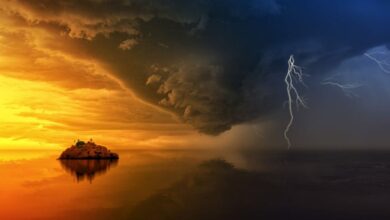What Are the Myths about the Aurora Borealis
The Aurora Borealis, often referred to as the Northern Lights, captivates observers with its mesmerizing dance of colors across the night sky. This natural phenomenon has inspired countless stories and legends throughout history. However, as with many wonders of nature, misconceptions abound. Understanding these myths can deepen our appreciation of this breathtaking spectacle.
Myth: The Northern Lights Are Only Visible in Winter
One of the most common misconceptions is that the Northern Lights can only be seen during the winter months. While it’s true that long, dark nights in winter provide optimal viewing conditions, the Aurora Borealis can occur year-round. In fact, the best times to witness this phenomenon often depend on solar activity rather than the season. Late summer and early autumn can also yield stunning displays, particularly in northern latitudes. True enthusiasts know that planning a trip around solar cycles can be just as crucial as considering the weather.
Myth: The Colors of the Aurora Are Fixed
Another myth is that the colors of the Aurora Borealis are always the same. While green is the most commonly observed color, the auroras can display a spectacular palette, including pinks, reds, purples, and blues. The specific colors result from the type of gas particles that collide with charged solar particles. Oxygen at higher altitudes produces reds and purples, while lower altitudes yield greens. Thus, the variation in color is a delightful surprise, depending on atmospheric conditions and solar activity.
Myth: The Aurora Is a Sign of Bad Weather
Some believe that seeing the Northern Lights indicates impending bad weather. This myth likely stems from the correlation between geomagnetic storms and certain weather patterns. In reality, the Aurora Borealis is caused by solar wind interacting with the Earth’s magnetic field and atmosphere, which is an entirely different phenomenon than weather patterns. In fact, clear skies are ideal for viewing the lights, making it unlikely that they signal a storm.
Myth: You Can Predict Auroras with Absolute Certainty
Another widespread belief is that auroras can be predicted with absolute certainty. While space weather forecasts can provide insight into the likelihood of auroral activity based on solar storms, predicting the exact time and location of an aurora is still a challenge. Scientists use indices like the KP index to gauge the potential for auroras, but conditions can change rapidly. A good rule of thumb is to stay informed about solar activity and remain patient, as the lights may appear unexpectedly.
Myth: The Aurora Borealis Has No Cultural Significance
The Aurora Borealis has inspired numerous myths and legends across different cultures, yet some people believe it is simply a scientific phenomenon devoid of cultural significance. Indigenous peoples in the Arctic regions have long revered the Northern Lights, interpreting them as messages from ancestors or as the spirits of animals. In Norse mythology, the lights were thought to be reflections from the armor of the Valkyries. These cultural interpretations enrich the experience of witnessing the aurora, adding depth and meaning beyond its scientific explanation.
Myth: You Need Special Equipment to See the Northern Lights
Many assume that special equipment, such as cameras or telescopes, is necessary to view the Northern Lights. In reality, the auroras are visible to the naked eye, and often, the best way to experience them is to simply step outside into a dark area away from city lights. While photography can enhance the experience, capturing the aurora is not essential to enjoy its beauty. For those wishing to photograph the lights, a tripod and a camera with manual settings can help, but the awe of the moment remains unmatched when experienced firsthand.
Exploring the Truth Behind the Aurora Borealis
Reveling in the beauty of the Aurora Borealis is enhanced by understanding the truths behind common myths. By debunking these misconceptions, we can approach this stunning natural display with greater knowledge and appreciation. Whether planning a trip to witness the lights or simply admiring them from afar, recognizing the reality behind the Northern Lights enriches our connection to this extraordinary phenomenon. Embrace the wonder of the Aurora Borealis, and let it inspire your imagination and spirit of adventure.







